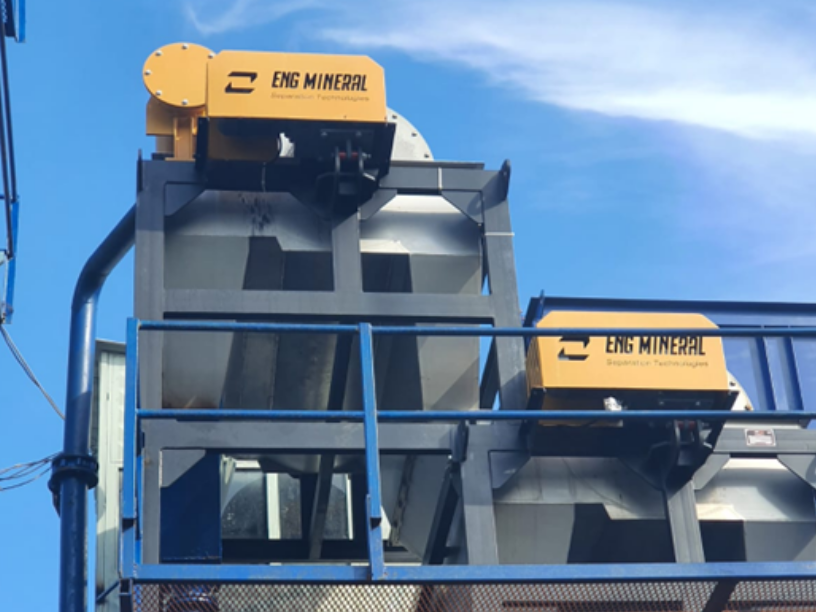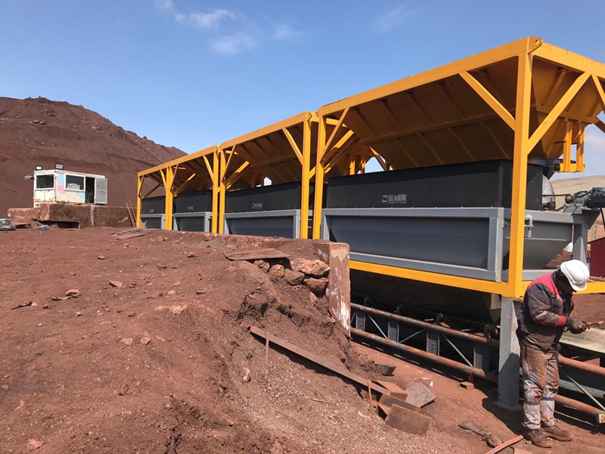.webp)

Magnet Measurement for Food Safety; The presence of metal particles in processed food products is undesirable in terms of pathogenicity or bacterial growth. However, the presence of foreign substances is one of the most frequently detected cases of adulteration in food.
Best Practices in Metal Contamination Control
Ensuring metal-free processed foods of any type is a challenging process that requires diligent and consistent monitoring. Continuous testing of incoming raw materials as well as ingredients is the first step in the foreign matter management system. It is admirable that things have been brought down to an acceptable level; However, the aim should be to completely eliminate the risk of occurrence with a clearly defined food safety and internal audit program.
Any internal food safety management program can be best implemented by those who know every step of a particular process. Critical Control Points for magnets and metal detecting equipment must first be defined and then accurately maintained and verified by third parties on but not an annual basis. Third party inspection should include the use of a Tubitak calibrated Gauss Meter and verification of accuracy. Internal magnet pull tests or portable Gauss meter measurements should be performed frequently, preferably every three months or more. Simply put, the more frequently magnet performance is evaluated, the sooner a problem can be detected and corrected.
Magnet Measurement for Food Safety
Many factors can affect magnet performance:
Equipment design – The number of magnets and how close they are placed determines the strength of the magnetic field. Closer space equals a stronger magnetic field; therefore provides higher efficiency
Temperature – Magnets can lose strength when exposed to high temperatures. Process temperatures should be taken into account when choosing magnet material
Product features – Processing dry, liquid or moist products will determine the configuration and placement of magnets
Product flow characteristics – Flow characteristics can be greatly affected by a variety of factors, particularly moisture, which is the most common cause of clogged magnetic separators.
GKGM's Health Hazard Assessment Board recommends regulatory action when metal fragments measuring one to three tenths of an inch in size are discovered. The food and drug law defines foods that contain a foreign object as adulterous and prohibits interstate commerce in adulterated food products. Medically speaking, metal fragments smaller than one-third of an inch in size can cause serious injury or trauma to infants, the elderly, or those who have just had surgery. These groups in particular are considered at 'special' risk. For those not in special risk groups, swallowing metal fragments of any measurable size can cause laceration of the mouth or throat, dental trauma, and perforation of the esophagus, intestines, or stomach.Most food processing equipment has many, if not all, metal parts. The opportunity for metal capping increases significantly as metal parts and even the magnets themselves become worn, damaged or broken.
Metal Inclusion can enter the process from a variety of sources including but not limited to:
wire mesh conveyor belts
saw blades
Wire brush or mixer blades
injection needles
Washers, nuts and bolts
mechanical pickers
Examining magnets and detectors on a regular schedule will often provide the first indication of the metal being processed. Analyzing metal findings can provide rapid identification of the source of metal fragments. In cases where metal findings do not pinpoint the source, a comprehensive equipment inspection may be ordered. As a prophylactic measure, it is prudent to regularly inspect equipment at any potential metal insertion points. Identifying these points as CCPs and then paying attention will allow wear parts to be replaced to the point where metal parts are machined before they break down.
Remember that magnets are not the “be all and end all” for preventing metal inclusion. A more effective scheme is to combine magnets with metal detectors, the recommended placement moves the magnets towards the metal detector. Some processors, depending on the product, will also use the use of X-ray equipment as a final stop gap measure for metal-contaminated food reaching the consumer. Any comprehensive Food Safety Management System will include well-defined procedures to prevent, control, correct and record all possible aspects of food smuggling, including metal incorporation.
Magnetic Field Measurement Locations
Determining the suitability of the magnetic field for human health and the importance of food;
Magnets used in your processes are observed under several main headings.
Magnetic Rod, Magnetic Dish, Magnetic Grid, Bullet Type Magnetic Filter, Magnetic Flow Chute (Plate), Pneumatic Magnetic Systems, Tape Top Magnetic Hanger etc. magnetic field detection of systems,
Deformation on the magnet, broken. crack. etc. control is provided.
The frequency of magnetic field waves is controlled.
On the magnet;
max. surface area
max. grammage of metal retained
max. magnetic intensity optimization is controlled.
Bacterial formation cannot be detected by us, it can be detected by food experts, but it is designed and controlled to prevent the food product from accumulating on the magnet and remaining on the magnet for a long time.
Proper Magnet Maintenance in Food Supply
Eng Mineral consultants have some suggestions for keeping your magnets in good working order:
1. Make sure each magnet has a strength of at least 10,000 gauss before installation. Measuring the Gaussian level is very important to ensure sufficient magnetic strength.
2. Check the strength of your magnets regularly and make sure they do not fall below 10,000 gauss. This ensures that you do not lose its integrity despite consistent use. Remember: Under certain conditions, the strength of a magnet can drop quickly.
3. Clean your magnets on a defined schedule. This ensures that your magnets do not become overloaded and remain at optimum strength. Too much debris on a magnet can interfere with its ability to capture passing particles.
4. Have a third party check its power annually. Besides making you look good on paper, this will give you a second opinion on all magnets and speed up your inner workings.
5. Back up your magnets with metal detectors downstream. If your magnets can't find anything, it will warn you. If they do, it's a good indication that you should service the magnet more often.
6. Document everything. Food law requires manufacturers to have a record-keeping system for all metal detection efforts. This doesn't have to be a complex computer system, but it should allow you to see when magnets have been serviced in the past, who has served them, and when they will be serviced in the future.
Tags: magnet measurement for food safety what is magnet measurement Magnet Measurement for Food Safety Eng Mineral Metal Pollution Control Metal Inclusion




.webp)
.webp)
.webp)
.webp)
.webp)
